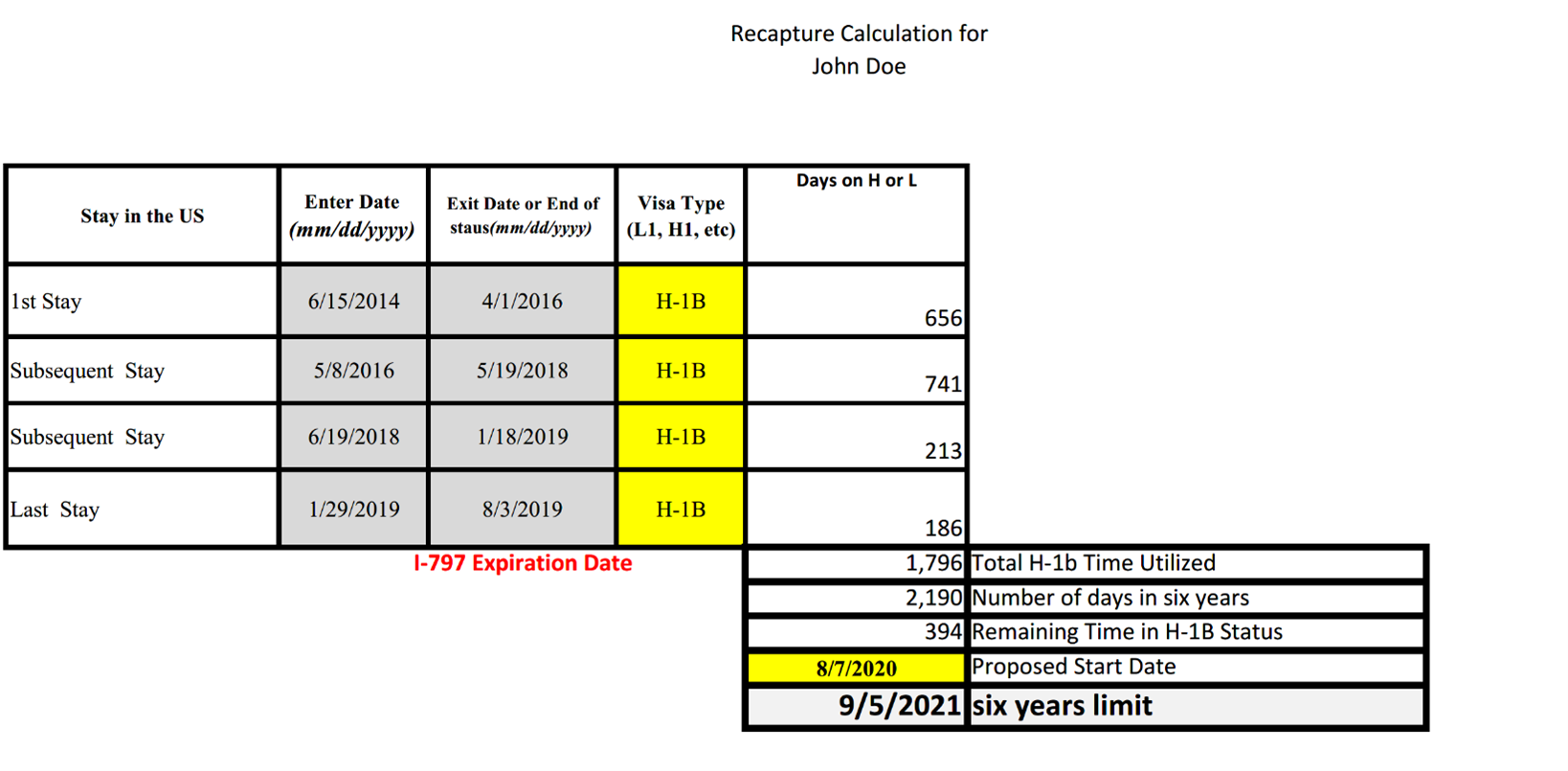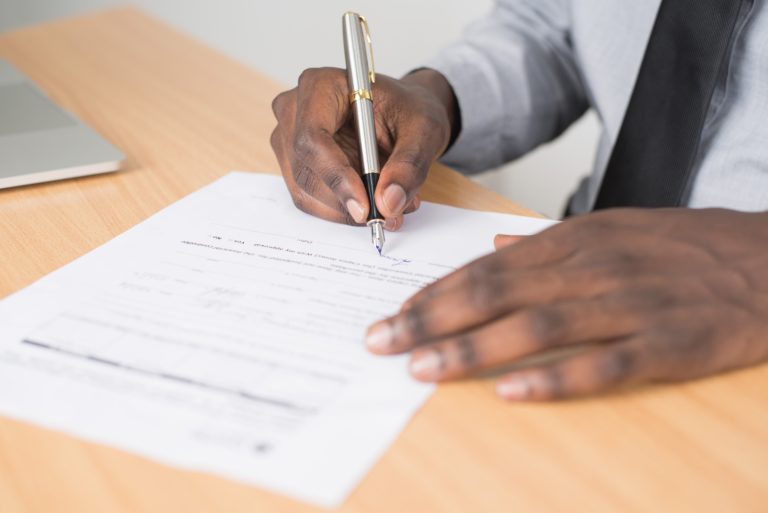H-1B Recapture of Days Spent Outside the U.S.
In this blog we address the following question: What happens to the time H-1B holders spend outside the U.S. while working for U.S. employers and still within the maximum six-year stay limitation?

You may have wondered this yourself. If you travel abroad for vacation, business, or family matters during your six-year stay in the U.S., how is the 6-year limit calculated? The answer lies in understanding the H-1B recapture calculation.
Most of the authority for the permitted H-1B recapture of time spent abroad is contained in the Michael Aytes Interoffice Memo from October 21, 2005. In 2017, USCIS published clear regulations that codified the substantial majority of the 2005 memo.
The Six Years are Cumulative, NOT Consecutive
Good news! The six-year maximum stay period is the total number of days you were present in the U.S. This means that for every full day (24 hours) you are outside the U.S., you are eligible to recapture that time when you come back. In other words, it is as if the clock stops counting your six-year stay when you leave and resumes when you come back. This is a very simplified way of looking at it; but please note that this is not an automatic process.
Example: you are an H-1B visa holder working for Company A in the U.S. If you never leave the U.S., you will reach your maximum allowed stay (not withstanding other exceptions, refer to our blog “The H-1B Visa Beyond 6 Years“) within exactly six years. But if you travel abroad for 20 days each year, you will have been physically present in the U.S. for six years MINUS 120 days (20 days x 6 years). Thus, even when you reach the six-year mark after arriving in the U.S. as an H-1B holder, you’ll still have 120 days beyond that date to stay and work in the U.S. Your H-1B maximum allowable time is in effect extended by 120 days.
What matters is the number of aggregate days totaling six years (or 2,190 days) you were physically present in the U.S. on H-1B status, not the total period you were approved for the status.
Recapture is NOT Automatic
The days you’ve spent outside the U.S. are not automatically given back to you towards your cumulative six-year limit. Even though USCIS has access to this record, USCIS does not keep track of your departures from, and arrivals to, the U.S. for the purpose of H-1B recapture. The H-1B petitioner (employer) must request the time abroad to be recaptured on your behalf and must provide proof of that time as well.
How Do I Request Recapture of Time Spent Outside the U.S.?
The H-1B holder and their petitioner are responsible for proving that the time they are requesting to recapture was indeed spent abroad. Copies of documents such as passport stamps, Form I-94 arrival/departure records, and/or plane tickets must be submitted along with the request for recapture, which is part of an H-1B extension petition.
Only those time periods for which you provide acceptable documentation will be recaptured. USCIS has also made it clear that “a Request for Evidence [will] not be sent to the petitioner for any claimed periods unsupported by evidence.” Therefore, you will not be notified if some or all periods you request to be credited back are deemed unsupported by sufficient evidence.
Example: if you submit a two-week period for recapture, but only have sufficient evidence to prove that you spent one week abroad, you’ll only be approved to recapture one week.
USCIS may grant all, part, or none of the requested recapture time.
Recapture time calculations can become complex as time spent on an L–1 visa will reduce the time allowed to stay on an H-1B visa, unless the beneficiary had one year of stay abroad after any L-1 visa stay.
When Can I Request Recapture?
As per 8 CFR 214.2(h)(13)(iii)(C), any “remaining H-1B time may be recaptured…at any time before the foreign worker uses the full period of H-1B admission.” Your employer can petition on your behalf to recapture time spent outside the U.S. for which you have sufficient documentation before you reach the maximum limit for your stay. This is a significant clarification of the 2005 Aytes memo in which USCIS confirmed that any time remaining unused out of the six years can be recaptured at any time in the future. Theoretically even many years later.
Recapture calculations will vary case by case and there may be multiple grants of recapture throughout your stay.
Below is an example of a recapture calculation. As can be seen in this example, the beneficiary’s stay in the U.S. for the six-year H-1B limit will span more than seven years due to the beneficiary’s repeated travel abroad.

Do I Need to Provide a Reason for Traveling Abroad?
H-1B recapture does not require proof of why you traveled abroad. You do not need to show that the time you spent outside the U.S. was “meaningfully interruptive” of your H-1B stay. Any trip that is more than one day outside the U.S., whether for business or personal reasons, can be recaptured. Any partial day spent in the U.S. will not be recaptured.
What About H-4 Spouses and Minor Children?
Spouses and minor children (on H-4 status) of the H-1B holder may extend their status by the same number of days as the principal H-1B holder. This makes sense, because if the H-1B holder can stay in the U.S. for additional time, then their family members can also stay in the U.S. without being required to return to their home county.
Need Help?
There may be other nuances that pertain to your case specifically not covered in this overview. Therefore, it is best to seek the guidance of the experienced immigration attorneys at Shihab Burke, LLC, Attorneys At Law to address any questions you may have about this H-1B recapture process or any other immigration issues you may have.
Contact us today! We are here to help.
Author Profile
Latest entries
 Green CardApril 25, 2022Common Medical Examination (Form I-693) Concerns
Green CardApril 25, 2022Common Medical Examination (Form I-693) Concerns Green CardApril 8, 20225 Ways to Get Your Adjustment of Status Moving Forward
Green CardApril 8, 20225 Ways to Get Your Adjustment of Status Moving Forward ImmigrationApril 4, 2022H-4 EAD Premium Processing Update; Waiting will Continue
ImmigrationApril 4, 2022H-4 EAD Premium Processing Update; Waiting will Continue Green CardMarch 28, 2022Consequences of Using Your EAD and AP While Your AOS is Pending
Green CardMarch 28, 2022Consequences of Using Your EAD and AP While Your AOS is Pending






